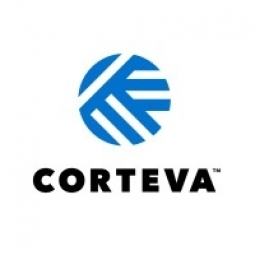公司规模
Large Corporate
地区
- America
国家
- United States
产品
- oneWeigh® scale automation system
技术栈
- RF ID card
- SmartPass card reader
实施规模
- Enterprise-wide Deployment
影响指标
- Productivity Improvements
- Cost Savings
技术
- 功能应用 - 库存管理系统
适用行业
- 食品与饮料
适用功能
- 物流运输
- 仓库和库存管理
用例
- 库存管理
- 仓库自动化
服务
- 系统集成
关于客户
Bunge is a global agribusiness and food company, operating in the farm-to-consumer food chain. It is involved in oilseed processing, producing and supplying vegetable oil and protein meal for animal feed and human consumption. Bunge’s soybean processing operation in Council Bluffs, IA is the largest such plant in the United States. The plant processes 60 million bushels of soybeans per year into high-protein soybean meal, soy hull pellets, and crude soybean oil. The plant loads approximately 70,000 trucks and 17,000 railcars annually.
挑战
Bunge’s soybean processing operation in Council Bluffs, IA is the largest such plant in the United States, processing 60 million bushels of soybeans per year into high-protein soybean meal, soy hull pellets, and crude soybean oil. Handling such a huge volume of incoming raw material and outgoing finished product is a daunting task. The plant receives and processes soybeans and produces finished products, loading approximately 70,000 trucks and 17,000 railcars annually. The challenge was to manage the massive volume of incoming raw material and outgoing finished product efficiently.
解决方案
To manage the massive volume of incoming raw material and outgoing finished product, Bunge implemented the oneWeigh® scale automation system produced by John Deere Agri Services. The system is used for incoming truck and rail shipments of soybeans and for outbound truck and rail shipments of soybean oil and meal and soybean hulls. The oneWeigh system automatically identifies the truck, calls up any contract information for updating, and records the weight of the fully loaded truck. The system also includes railcar data from the Association of American Railroads. Before unloading, railcars are weighed on a track scale. A SmartPass tag reader scans the car’s RF tag, and the car’s number is recorded in oneWeigh. The system automatically pulls up the tare weight data for that car. Soybean samples also are taken from railcars and tested for moisture, fat (oil content), protein, and fiber, and that information also is plugged into the oneWeigh system, along with the railcar’s vehicle number and its seal number.
运营影响
数量效益

Case Study missing?
Start adding your own!
Register with your work email and create a new case study profile for your business.
相关案例.

Case Study
The Kellogg Company
Kellogg keeps a close eye on its trade spend, analyzing large volumes of data and running complex simulations to predict which promotional activities will be the most effective. Kellogg needed to decrease the trade spend but its traditional relational database on premises could not keep up with the pace of demand.

Case Study
HEINEKEN Uses the Cloud to Reach 10.5 Million Consumers
For 2012 campaign, the Bond promotion, it planned to launch the campaign at the same time everywhere on the planet. That created unprecedented challenges for HEINEKEN—nowhere more so than in its technology operation. The primary digital content for the campaign was a 100-megabyte movie that had to play flawlessly for millions of viewers worldwide. After all, Bond never fails. No one was going to tolerate a technology failure that might bruise his brand.Previously, HEINEKEN had supported digital media at its outsourced datacenter. But that datacenter lacked the computing resources HEINEKEN needed, and building them—especially to support peak traffic that would total millions of simultaneous hits—would have been both time-consuming and expensive. Nor would it have provided the geographic reach that HEINEKEN needed to minimize latency worldwide.

Case Study
Energy Management System at Sugar Industry
The company wanted to use the information from the system to claim under the renewable energy certificate scheme. The benefit to the company under the renewable energy certificates is Rs 75 million a year. To enable the above, an end-to-end solution for load monitoring, consumption monitoring, online data monitoring, automatic meter data acquisition which can be exported to SAP and other applications is required.

Case Study
Coca Cola Swaziland Conco Case Study
Coco Cola Swaziland, South Africa would like to find a solution that would enable the following results: - Reduce energy consumption by 20% in one year. - Formulate a series of strategic initiatives that would enlist the commitment of corporate management and create employee awareness while helping meet departmental targets and investing in tools that assist with energy management. - Formulate a series of tactical initiatives that would optimize energy usage on the shop floor. These would include charging forklifts and running cold rooms only during off-peak periods, running the dust extractors only during working hours and basing lights and air-conditioning on someone’s presence. - Increase visibility into the factory and other processes. - Enable limited, non-intrusive control functions for certain processes.

Case Study
Temperature Monitoring for Restaurant Food Storage
When it came to implementing a solution, Mr. Nesbitt had an idea of what functionality that he wanted. Although not mandated by Health Canada, Mr. Nesbitt wanted to ensure quality control issues met the highest possible standards as part of his commitment to top-of-class food services. This wish list included an easy-to use temperature-monitoring system that could provide a visible display of the temperatures of all of his refrigerators and freezers, including historical information so that he could review the performance of his equipment. It also had to provide alert notification (but email alerts and SMS text message alerts) to alert key staff in the event that a cooling system was exceeding pre-set warning limits.

Case Study
Coca-Cola Refreshments, U.S.
Coca-Cola Refreshments owns and manages Coca-Cola branded refrigerators in retail establishments. Legacy systems were used to locate equipment information by logging onto multiple servers which took up to 8 hours to update information on 30-40 units. The company had no overall visibility into equipment status or maintenance history.







